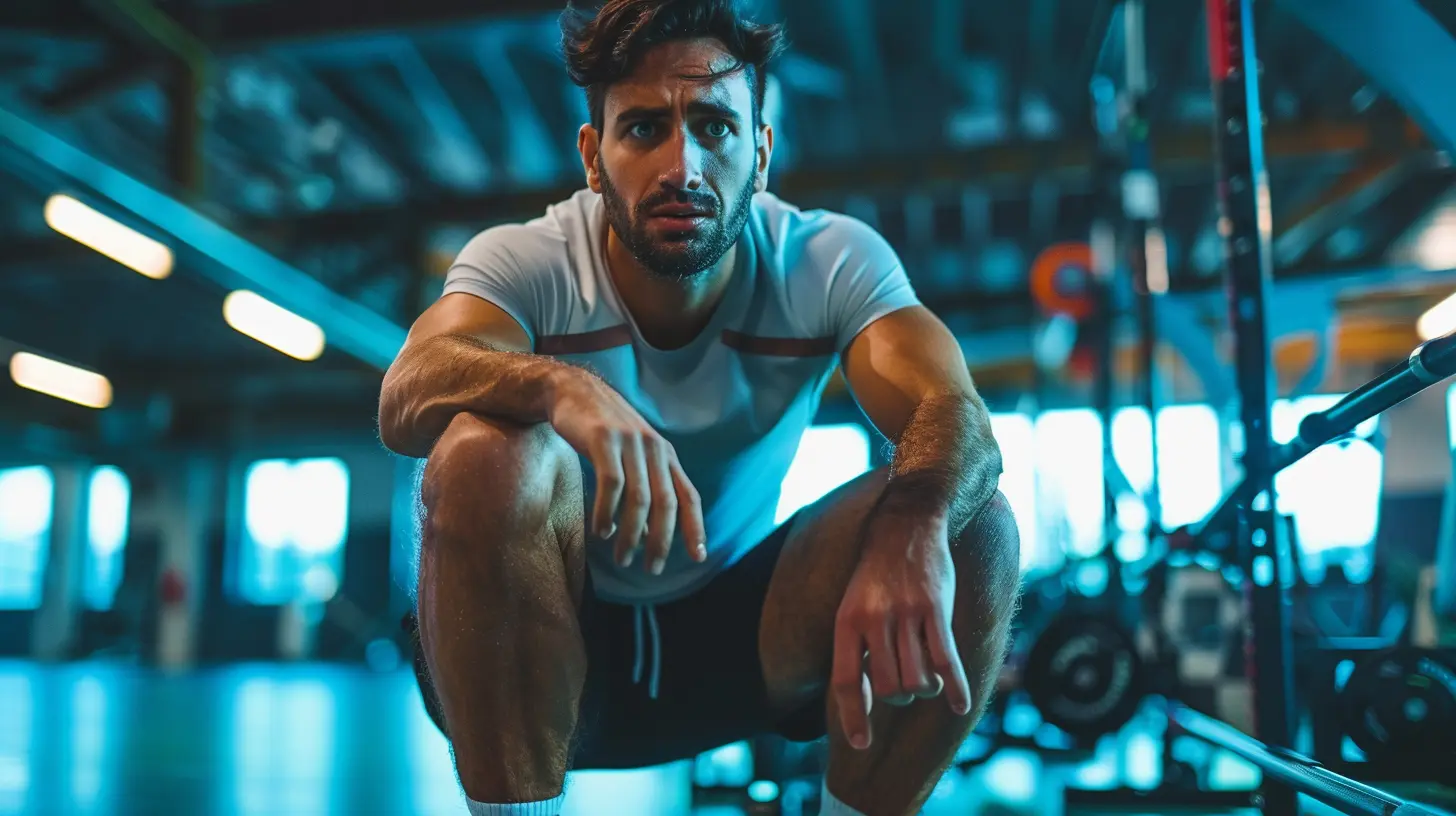A Deep Dive into ACL Injuries and Recovery Timelines
3 November 2025
If you're an athlete—or even just someone who enjoys weekend pickup games or staying active—you’ve probably heard about ACL injuries. It’s one of those dreaded terms in sports, like "torn Achilles" or "rotator cuff surgery." But what really happens when someone tears their ACL? And perhaps more importantly, how long does it take to recover?
In this article, we're diving deep into the world of ACL injuries. We’ll break down what the ACL is, how it gets injured, what recovery looks like, and what you can expect physically and mentally on the road back. So kick back, stretch those knees a little, and let’s dig in.
What Is the ACL, Anyway?
Let’s start with the basics. The ACL, or Anterior Cruciate Ligament, is one of the four main ligaments in your knee. It plays a big role in keeping your knee stable, especially when you're stopping, starting, or changing direction fast—think soccer, basketball, football, and skiing.Imagine your knee as a complex hinge. The ACL is like one of the ropes that keeps that hinge from swinging out of control. It connects your thigh bone (femur) to your shin bone (tibia) and helps prevent your shin from sliding too far forward.
Now, when that rope snaps (aka tears), your knee loses its stability, and depending on how bad it is, you might go from playing a game to needing surgery. Not fun.
How Do ACL Injuries Happen?
Here's the crazy part—most ACL injuries aren’t from collisions. Sure, contact can do it, but the majority happen during non-contact movements. That’s right. You’re more likely to tear your ACL just by landing wrong after a jump, or cutting too fast on the field.Have you ever seen a player on TV suddenly fall while making a move, clutching their knee? Odds are, that was an ACL tear. The injury usually happens in a split second, and the signs are pretty distinct:
- A loud "pop"
- Immediate and intense knee pain
- Swelling within the first few hours
- Feeling like your knee is unstable or "giving out"
Sometimes you can walk afterward, but that doesn’t mean it’s not serious. Trust me, if something feels off, always get it checked.
Who's Most at Risk?
This isn’t just a “dumb luck” kind of injury. There are real risk factors involved.Gender Differences
Women are significantly more likely to suffer ACL tears than men. Some studies suggest up to 8 times more likely. That’s huge. Why? It’s a mix of things—wider hips, different muscle firing patterns, hormonal influences, and biomechanics. Not to mention, sports like soccer and basketball (where ACL injuries are common) have a strong female presence.Sport Type
You’re going to be at higher risk if you’re involved in:- Soccer
- Basketball
- Football
- Lacrosse
- Skiing
- Gymnastics
It’s all about those quick pivots, sudden stops, and high-impact landings.
Previous Injuries
If you've torn your ACL before, yep—you’re unfortunately more likely to do it again, especially if you return to sports too soon or skip out on proper rehab.
The Different Grades of ACL Injuries
Not all ACL injuries are created equal. Some people hear “ACL tear” and immediately assume it's full-blown surgery and a year off. That’s not always the case. Here's a breakdown:- Grade 1 (Sprain): The ligament is slightly stretched but still intact. Think of it as a bad twist. Painful, but manageable.
- Grade 2 (Partial Tear): This is less common. The ligament is partially torn, and the knee may feel unstable.
- Grade 3 (Complete Tear): This is the big one. The ligament is totally torn or blown. Surgery is often on the table if you’re young, active, or planning to return to sports.
Do You Always Need Surgery?
Not necessarily. Here’s where it gets interesting. Older adults or those who don’t play pivot-heavy sports sometimes can rehab their knee without surgery. Physical therapy can strengthen the surrounding muscles and help stabilize the joint.But if you’re an athlete or even a weekend warrior who loves cutting movements—surgery is usually recommended. Without that reconstructed ligament, your knee's going to be wobbly. And nobody wants that.
The Road to Recovery: What to Expect
So, you’ve torn your ACL. Surgery is done. Now what? Spoiler: this isn’t a sprint—it’s a marathon.Immediate Post-Surgery
Right after surgery, your main goals are:- Reduce swelling
- Regain range of motion
- Start walking with assistance (crutches at first)
You’ll be surprised how early physical therapy starts—sometimes just a day or two after surgery!
Month 1 to 3: The Foundation Stage
This phase is all about healing and re-learning how to walk, climb stairs, and regain basic mobility.- Focus on quad and hamstring activation
- Slowly ditch the crutches and knee brace
- Reduce inflammation
- Start light exercises for balance
Your physical therapist becomes your new best friend during this time.
Month 3 to 6: Getting Stronger
This is where the heavy lifting begins (literally and figuratively). You’ll start rebuilding muscle mass and improving joint stability.- More focused strength training
- Single-leg exercises
- Plyometrics like low-impact jumps
- Agility drills (light ones)
This stage is crucial for returning to active movement. Skip it or rush it, and you're risking another tear.
Month 6 to 9: Return to Sport
Not so fast—you’re not running back into the game just yet. Even though you feel stronger, your ligament is still healing.- Advanced agility drills
- Full range of motion should be back
- More intense sport-specific training
Your doctor and PT will decide if your knee is ready for high-intensity sports. Some people can return at 9 months; others need a full year. Patience, my friend.
Mental Recovery Is Just as Important
We talk a lot about physical recovery, but the mental side? It’s real, and it’s tough.Athletes often deal with fear of re-injury, anxiety, and frustration. You go from peak performance to barely walking—it's emotionally draining.
Work with a sports psychologist if you can. Visualization techniques, confidence-building, and even group therapy can make a huge difference.
What About Re-Injury?
Here's the harsh truth: if you’ve torn your ACL once, your chances of re-injury (either same knee or opposite knee) are higher than normal. That’s why the recovery process is so detailed and structured.Don’t rush back just because someone else returned in six months. Bodies heal at different paces.
Tips to Prevent ACL Injuries
Whether you’ve had a previous injury or you’re just trying to stay safe, here are a few things you can do to help protect your knees:- Strengthen your legs, especially hamstrings and glutes
- Improve your landing techniques—bend those knees!
- Incorporate agility training into your workouts
- Work on balance and proprioception
- Warm up properly, every single time
And for the ladies out there—there are ACL-specific prevention programs designed just for female athletes. Definitely worth looking into.
Real Talk: What Recovery Actually Feels Like
Let’s get honest for a second. Recovery isn’t just a linear upward climb. It’s messy. Some days you’ll crush your exercises. Other days, your knee might feel like a water balloon.You’ll doubt yourself. You’ll wish it was over faster. But staying consistent, showing up for PT, and not skipping steps is the key to getting back stronger than ever.
And hey, you’ll learn a lot about your own grit along the way.
Final Thoughts
ACL injuries are tough—no sugarcoating that. But they’re not the end of the world. With proper care, solid rehab, and a whole lot of patience, you can absolutely bounce back.Just remember: this isn’t just about fixing a knee. It’s about rebuilding confidence, discipline, strength, and trust in your own body. Whether you’re gunning for a comeback season or just want to chase your kids around the yard, that recovery journey is well worth the grind.
So respect the process, stay the course, and when in doubt—ice that knee and keep moving forward.
all images in this post were generated using AI tools
Category:
Sports MedicineAuthor:

Preston Wilkins
Discussion
rate this article
1 comments
Margaret Stevens
This article provides a crucial examination of ACL injuries, highlighting their complexity and varied recovery timelines. Understanding the nuances of rehabilitation, including physical therapy and mental resilience, is essential for athletes aiming to return to peak performance while minimizing re-injury risks.
November 3, 2025 at 11:26 AM

